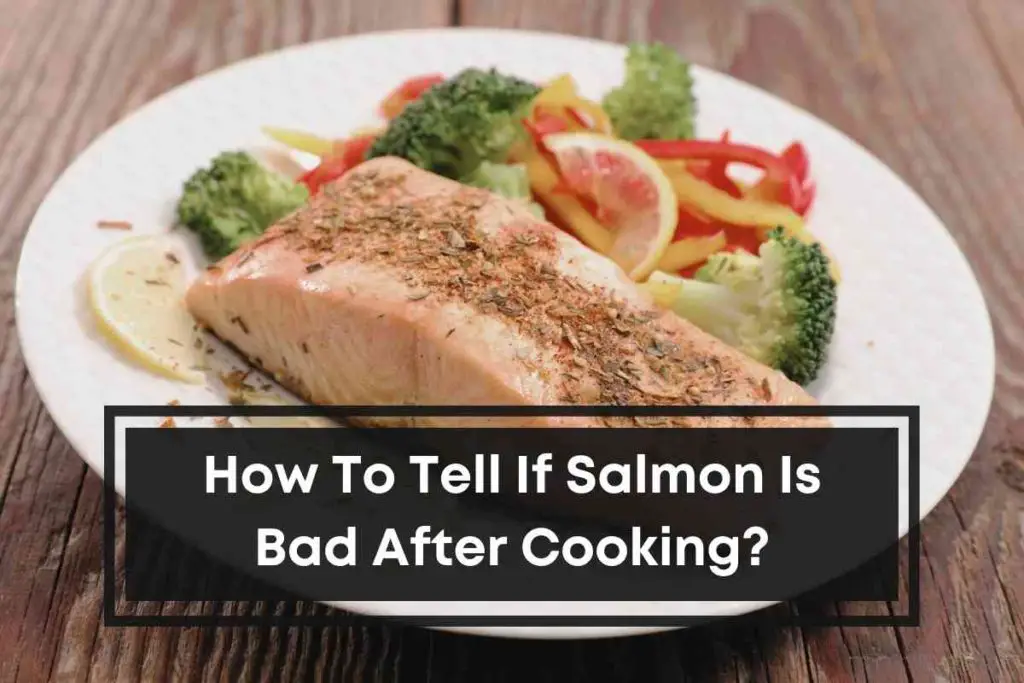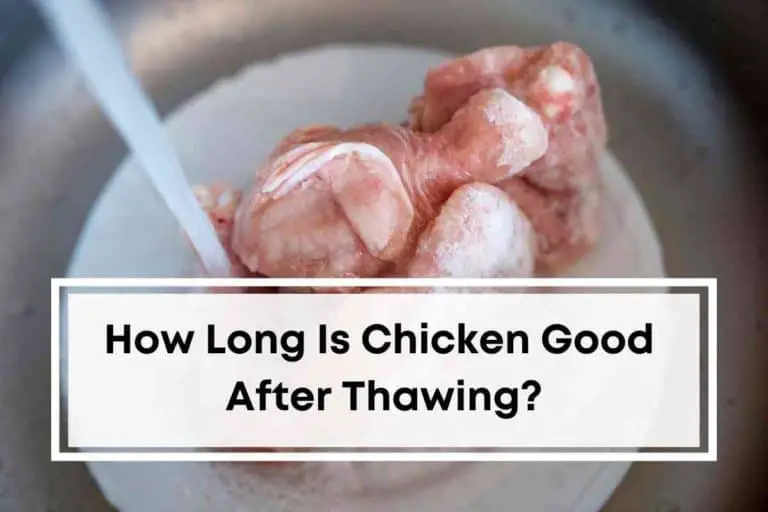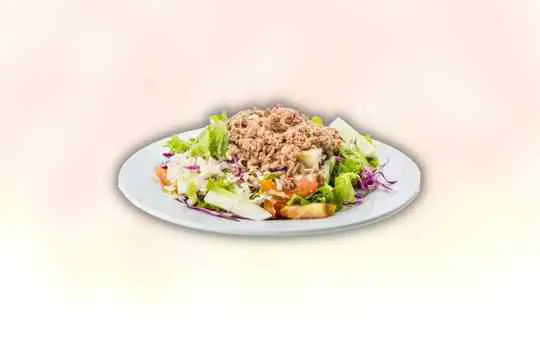How To Tell If Salmon Is Bad After Cooking?
There are many ways to cook salmon to help avoid having your dinner go south before you even take it out of the oven.
When appropriately prepared, salmon tastes amazing and is packed with healthy nutrients. Unfortunately, many restaurants and fishmongers cook salmon improperly—which can lead to the fish going bad or tasting bad. If you’re planning to buy salmon, here are some ways to check for quality and whether or not it’s going to turn out the way you want it to.
Salmon is a popular fish that is often cooked and eaten, but what do you do if you notice that the salmon you’ve cooked tastes bad? In this guide, we will discuss how to tell if salmon is bad after cooking and what to do if it is.

What Are the Signs That Salmon Is Bad After Cooking?
When it comes to cooking salmon, there are a few things that you can look for to make sure that the dish is as perfect as possible. However, if you notice any signs that the salmon is not good after being cooked, be sure to discard it immediately.
Here are a few telltale signs that salmon may have gone bad:
01. Odor
After cooking, the smell of bad salmon is unmistakable, and it’s not a good one. You might notice a strong fishiness reminiscent of the ocean but with an underlying “off” tang to it. This is the odor of ammonia, which comes from bacteria breaking down proteins in the flesh of your fish.
02. Color
Salmon flesh should be bright pink or orange when you buy it fresh—the color may dull after cooking, but there should be no green or brown spots on your salmon (unless you’re using lox!). If you see discoloration on any part of your fish after cooking it in water or oil at a high temperature for several minutes, this could mean bacteria have taken hold inside its cells.
03. Taste
The salmon may have a sour or metallic taste, which could signify that there was not enough salt or lemon in the dish. Again, you should throw out the salmon if this taste is noticeable or unpleasant.
04. Consistency
Consistency is a key indicator of whether or not your salmon is bad. A bad piece of fish will be soft, mushy, and sticky. It’s not easy to tell if a piece of cooked salmon is bad by looking at it because it looks almost the same as any other cooked piece of salmon—it’ll be soft, squishy, and watery.
If you’re concerned about the freshness of your salmon, use your hands to feel for texture irregularities like bumps or lumps underneath the skin. The skin should be smooth and shiny with no signs of bruising or discoloration in healthy fish; if there are any abnormalities, throw away that particular piece immediately!
05. Salmon Flesh
The flesh of the salmon may be tough – This can happen if the salmon is frozen and thawed before being cooked. If this is the case, the fish may have been refrigerated for too long before being cooked, which can cause it to become tough.
What to Do If You Think Your Salmon Is Bad After Cooking?
If you’re not happy with the taste of your cooked salmon, there are a few things you can do to check if it’s bad.
- Take a small bite and evaluate the flavor. Is it too strong or too weak? If so, the salmon may be bad.
- Check for any signs of spoilage or food poisoning. These could include slimy textures, an off odor, or greenish-black spots on the flesh. If you detect any of these signs, don’t eat the salmon; instead, dispose of it properly.
- Cook salmon for the recommended time on the package or recipe you used. It may be bad if it’s still not tasting good after cooking for the appropriate amount of time.
- If all else fails, try again with a different piece of salmon. There is a chance that your first batch was just unlucky and didn’t turn out well.
What Does Bad Salmon Taste like?
Bad salmon smells and tastes fishy. There is probably something wrong with the salmon if you smell a strong fishy odor. If it smells like sewage, it is bad and should be thrown away. If the salmon tastes sour, it is bad.
How to Cook Salmon Correctly Every Time?
The best way to cook salmon is on an outdoor grill or cast-iron skillet. Both methods give the fish a nice crispy crust and ensure it doesn’t overcook. To avoid any adverse side effects from cooking salmon incorrectly, read our guide on how to cook salmon correctly first.
If all goes well and you follow our tips, your next meal will be grilled salmon with a delicious lemon herb sauce!
- You should select a salmon fillet that is fresh and of good quality.
- Prepare the salmon by seasoning it with salt, pepper, and other desired spices.
- Cook the salmon in a preheated oven at a moderate temperature for about 20 minutes.
- Allow the salmon to rest for a few minutes before serving so the juices can redistribute evenly.
What Happens If You Eat Bad Salmon?
If you eat bad salmon, you will likely experience food poisoning. This is because salmon is often infected with parasites, bacteria, and viruses. These can all cause severe illness and, in some cases, death. Therefore, it is important to only eat salmon that has been cooked properly.
In addition, the most common outcome is an upset stomach, followed by a headache and then vomiting. In extreme cases, other potential side effects include diarrhea, fever, and even seizures. If you experience these symptoms after eating bad salmon, it’s essential to seek medical attention as soon as possible.
Read Also: 13 Best Anchovies Substitutes
Can Salmon Make You Sick?
Yes, salmon can make you sick if it is not cooked correctly. Undercooked salmon can contain bacteria that can cause food poisoning. Symptoms of food poisoning from salmon include nausea, vomiting, and diarrhea. You should seek medical attention if you experience these symptoms after eating salmon.
Salmon can be a great source of protein, but it’s essential to understand the risks associated with eating it. If you are concerned about whether or not salmon is safe to eat, here are three indicators that will help you determine if it is:
- The fish feels slimy or slippery to the touch. This is a sign that the fish has been contaminated with bacteria and is not safe to eat.
- The fish emits an unpleasant odor, and this indicates that the fish may have been contaminated with harmful bacteria and should not be consumed.
- The flesh appears wet, slimy, or greenish-white in color. This is a sign that the fish has recently been exposed to water, which means it may be contaminated and unsafe to eat.
Conclusion
Salmon can be a great source of protein, but it’s essential to know how to tell if it’s bad after cooking. When cooked properly, salmon is a healthy fish that provides plenty of omega-3 fatty acids and other nutrients. However, if you find that your salmon is tough or chewy, it may have been overcooked. If this is the case, don’t hesitate to cook it further or use another type of fish instead.






![Can You Freeze Deli Turkey Slices [A Detailed Answer]](https://orbitkitchen.com/wp-content/uploads/2022/08/Can-You-Freeze-Deli-Turkey-Slices-768x512.jpg)
